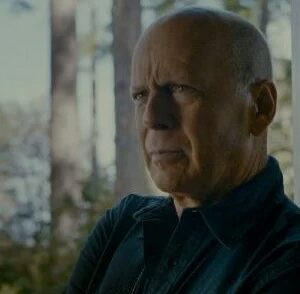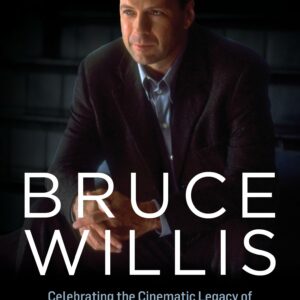Introduction
In the pantheon of Hollywood’s leading men, few stand as tall or shine as brightly as Brad Pitt. With a career that has spanned more than three decades, Pitt has not only established himself as a cultural icon but also as one of the most versatile and celebrated actors of his generation. His ability to seamlessly transition between genres, adapt to various character complexities, and embody a diverse array of roles has made him a significant figure in the film industry.
From his breakout role in Thelma & Louise to his recent triumph in Once Upon a Time in Hollywood, Pitt’s career trajectory is a testament to his enduring appeal. What sets him apart is not just his heartthrob looks or his box-office draw, but rather his extraordinary capacity to reinvent himself time and again. This article delves into the many facets of Brad Pitt’s performances, exploring his consistency in character complexity, physical transformations, moral ambiguity, emotional depth, and fruitful collaborations with esteemed directors. Each of these elements contributes to his status as a lasting force in cinema.
Consistency in Character Complexity
Brad Pitt’s filmography is rich with characters that exude complexity and nuance. He has a unique talent for portraying multifaceted personalities, drawing audiences into the inner workings of his characters’ minds. Take, for example, his charming portrayal of Rusty Ryan in Ocean’s Eleven. Rusty is not just a slick con artist; he is a layered individual whose charm is underpinned by an unsettling pragmatism. Pitt’s performance balances humor and a hint of moral ambiguity, allowing audiences to see both the lightheartedness and the darker undertones of a life filled with deception.
In stark contrast, we see the emotional depth of Benjamin Button in The Curious Case of Benjamin Button. Here, Pitt explores the complexities of aging in reverse, giving life to a character who experiences love and loss at an accelerated pace. This role demands a profound emotional resonance that Pitt navigates with finesse. His ability to convey vulnerability, alongside the character’s inherent strength, creates a rich tapestry of human experience that resonates with viewers. Such versatility is a hallmark of Pitt’s work, allowing him to transition effortlessly from roles that require bravado to those that demand introspection.
Pitt’s characters often embody a balance between strength and vulnerability, an interplay that makes them deeply relatable. For instance, in Fight Club, his portrayal of Tyler Durden is a compelling exploration of masculinity and societal expectations. As a charismatic anarchist, Tyler embodies a certain strength that captivates those around him. Yet, this strength is juxtaposed with the protagonist’s inner turmoil, revealing layers of vulnerability that highlight the fragility of identity in a consumer-driven world. This consistent exploration of character complexity has become a defining feature of Pitt’s performances, reinforcing his status as an actor capable of profound depth.
Physical Transformation
One of the most striking aspects of Brad Pitt’s career is his dedication to physical transformation for the sake of authenticity. This commitment to embodying his characters is exemplified in his performances in Fight Club and Troy. In Fight Club, Pitt underwent a drastic physical transformation to portray Tyler Durden, immersing himself in the role by adopting a chiseled physique that epitomized the character’s raw energy and rebellious spirit. His transformation went beyond mere aesthetics; it was a physical manifestation of the character’s defiance against societal norms and expectations.
Similarly, in Troy, Pitt’s portrayal of Achilles required a different kind of physicality. He embodied the role of a legendary warrior with a presence that demanded both strength and grace. His rigorous training and commitment to building the warrior’s physique showcased his dedication to the craft and provided audiences with a visceral experience of the character’s might on the battlefield. This physical immersion not only enhances the authenticity of his performances but also allows viewers to connect with his characters on a more profound level.
Pitt’s ability to undergo such significant transformations for his roles exemplifies his unwavering commitment to the craft of acting. Each physical change he undergoes adds layers to his performances, allowing him to inhabit his characters fully and convincingly. This dedication resonates with audiences, who can appreciate the lengths to which he goes to ensure that his characters are both believable and compelling.
Moral Ambiguity
Pitt’s filmography is rife with characters that navigate the complex terrain of moral ambiguity. His portrayal of Detective David Mills in Se7en is a prime example of this complexity. Mills is not merely a hero; he is a deeply flawed individual grappling with his own demons. The film’s narrative pushes him into a harrowing moral dilemma that forces him to confront the darkness within himself. Pitt’s ability to portray this internal struggle makes Mills a relatable figure, drawing viewers into the ethical quagmire he finds himself in.
In Moneyball, Pitt’s portrayal of Billy Beane further emphasizes his knack for embodying characters who inhabit the grey areas of morality. Beane’s revolutionary approach to baseball management challenges traditional notions of success and loyalty. He is a man willing to challenge the status quo, making decisions that are not always popular but are driven by a desire to succeed. This moral ambiguity adds depth to the character, as audiences witness his struggles to balance his vision with the expectations of those around him.
Pitt’s adeptness at portraying characters with moral dilemmas adds a layer of relatability to his performances. Audiences are drawn to the human experience of navigating ethical quandaries, and Pitt’s ability to embody this complexity allows viewers to see themselves reflected in his characters. His roles often provoke thought and discussion about the nature of right and wrong, further solidifying his impact on cinema.
Emotional Depth and Growth
A hallmark of Brad Pitt’s performances is the emotional depth and growth of his characters over time. This is particularly evident in his role as Cliff Booth in Once Upon a Time in Hollywood. Booth is a character rooted in the past, yet he embodies a sense of emotional steadiness that reflects the complexities of his life. Throughout the film, we witness moments of introspection and resilience, showcasing Pitt’s ability to portray a character grappling with his place in an evolving industry.
Similarly, in Legends of the Fall, Pitt’s portrayal of Tristan Ludlow reveals a character who undergoes dramatic evolution throughout the narrative. From a passionate young man seeking adventure to a tortured soul grappling with loss and regret, Tristan’s journey reflects the complexities of love, family, and the passage of time. Pitt’s performance captures this emotional depth, allowing audiences to connect with Tristan’s struggles on a visceral level.
This focus on emotional growth is a recurring theme in Pitt’s work. His characters often undergo significant transformations, reflecting the human experience of change and development. Whether it’s the journey of self-discovery or the struggle to reconcile past traumas, Pitt’s ability to convey these arcs adds a layer of authenticity to his performances. Audiences are not just spectators; they become emotionally invested in the characters’ journeys, making Pitt’s performances all the more impactful.
Collaboration with Esteemed Directors
Brad Pitt’s collaborations with esteemed directors have played a pivotal role in shaping his performances and elevating the narratives he embodies. Working with visionary filmmakers such as David Fincher and Quentin Tarantino, Pitt has delivered some of his most iconic performances. In Fight Club, Fincher’s meticulous direction allowed Pitt to explore the complexities of Tyler Durden with depth and nuance. The synergy between actor and director is palpable, resulting in a performance that resonates with audiences long after the credits roll.
Tarantino’s direction in Once Upon a Time in Hollywood provided Pitt with the opportunity to showcase his range in a film that celebrates the Golden Age of Hollywood. The film’s narrative allows for a nuanced exploration of Booth’s character, highlighting both his charm and the darker aspects of his persona. Tarantino’s signature storytelling style complements Pitt’s performance, resulting in a character that is both memorable and layered.
These collaborations underscore the importance of vision in the craft of filmmaking. Pitt’s ability to bring depth to his characters is often enhanced by the directors’ unique perspectives, resulting in performances that are not only compelling but also integral to the narratives they inhabit. This synergy is a testament to Pitt’s adaptability as an actor, as he thrives in environments where creativity and vision are paramount.
Conclusion
Brad Pitt’s enduring presence in Hollywood can be attributed to his remarkable ability to embody complex characters that resonate with audiences on multiple levels. Through his consistency in character complexity, physical transformations, exploration of moral ambiguity, emotional depth and growth, and collaborations with esteemed directors, Pitt has established himself as a true master of his craft. His performances transcend mere entertainment; they invite audiences into the intricate tapestry of human experience, allowing them to connect with the characters he brings to life.
As he continues to evolve and take on new challenges, one thing remains clear: Brad Pitt’s legacy as one of Hollywood’s most versatile and celebrated actors is firmly cemented. His ability to find similarities in character development—vulnerability, complexity, and moral ambiguity—while delivering unique performances ensures that he remains an enduring force in the film industry for years to come.





